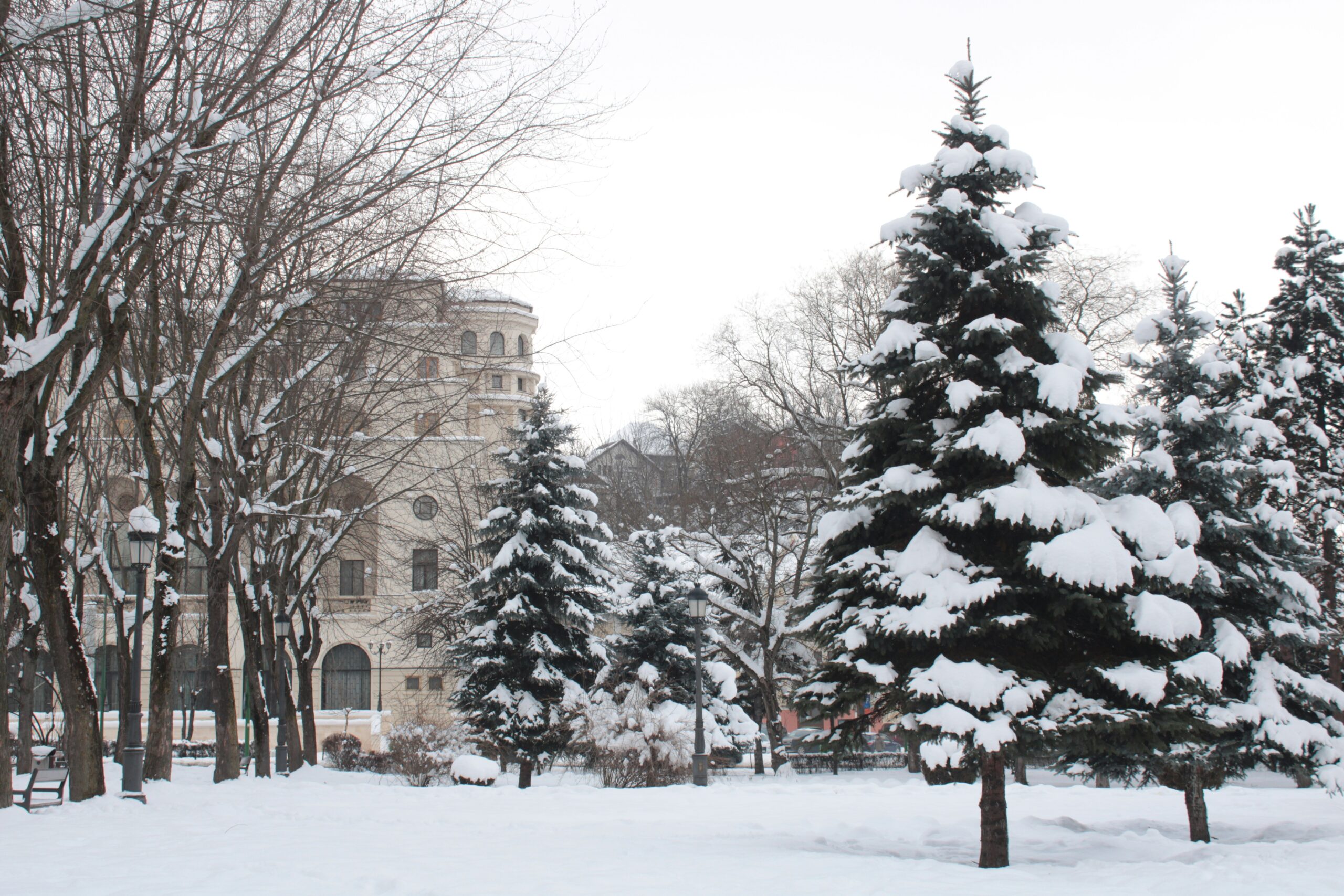Winters in Southwestern Ontario brings a mix of unpleasant winter conditions. When it’s not a beautifully sunny winter morning, Ontario winters can be a mix of freezing rain, heavy snow, sleet, freezing temperatures, and more. While we avoid these changing conditions by staying indoors, our beautifully landscaped gardens bear the brunt of winter’s force. From frost damage to snow-laden branches, preparation is key to making sure your landscape continues to thrive when spring returns. While making winter preparations for your garden and landscape may be an extra chore, it can be an effective strategy in keeping your plants and lawn healthy and maintaining all that hard work you put in during the summer months.
Burlap Wraps and Tree Guards
Young trees and some plants are especially vulnerable to freezing temperatures and harsh cold winds. A simple yet effective solution to protect these plants is the use of burlap wraps. Burlap wraps act as a gentle blanket, reducing the effect of cold winds and freezing water droplets on plants while still allowing air circulation.
Burlap wraps are easy to use; loosely wrap shrubs and small trees with breathable burlap fabric, securing it with twine. Burlap is used for its durability and breathability, whereas plastics can trap moisture and encourage mold.
Tree guards are another form of protection used for young or newly planted trees. These guards are installed around the trunk of the tree to prevent frost cracks and deter wildlife like deer and rodents that may be tempted to feed on bark during winter.
Mulching for Insulation and Soil Health
Mulching your garden is great for the summer months, providing nutrients as the mulch decomposes, holding water, and protecting your garden’s soil. Maintaining a thick layer of mulch during the winter months is just as important as it helps to insulate roots from rapid temperature changes and improves soil health.
When the ground freezes and thaws repeatedly during the winter, it can cause soil heaving, which uproots plants. A thick layer of mulch during the winter helps to stabilize soil temperatures and retain moisture, preventing this disruption. Organic mulching materials like shredded bark, straw, or even leaves work best. Apply 2-4 inches of mulch around garden beds, taking care to leave a gap around the base of plants to prevent rot.
Managing Snow Loads
When the snow decides to come, it can put a lot of strain on large plants, bushes, and trees. Heavy snow loads can bend or break branches, leading to permanent damage, stunting growth or even the loss of entire plants.
When heavy snow arrives, it is best to monitor large trees and bushes, helping them out when the load becomes too great. Gently brush off snow from tree branches and shrubs with a broom, working upward to avoid adding more weight. Be sure not to damage the tree or bush with whatever implement you choose.
Branches coated in ice can also be damaged, but it is too risky to remove. Ice can become very heavy and can also make branches more brittle. In most cases, attempting to remove ice can do more damage than good, easily breaking tree limbs. Instead, wait for a natural thaw instead of removing ice.
Using tree or bush covering or using stakes or temporary supports for hedges and top-heavy plants can be a good way to avoid damage due to excessive snow and to prevent them from collapsing under snow weight. This can also be effective in preventing damaging ice build-up.
Regular attention to snow loads will help protect the integrity of your trees and shrubs throughout winter.
4 Pruning Considerations for Winter Months
Pruning plants and trees in your garden at the proper times can help to reduce the amount of areas prone to freezing or snow load. Pruning during winter dormancy has several benefits, but timing and technique are key.
Most plants are dormant in winter, making it easier to identify and remove damaged or diseased branches without impacting growth. Focus on removing weak, crossing, or broken branches from trees and shrubs. Avoid pruning spring-flowering plants, as it can reduce their blooms. Use clean, sharp tools to make precise cuts, and avoid pruning during extreme cold spells to prevent additional stress on plants. Proper pruning not only improves the structure of your plants but also minimizes potential snow damage prevention efforts during the season.
Implement a Proactive Plan
Proactive planning is the best line of defense when it comes to protecting your plants and property from the harsh winter conditions. Mountview Services provides expert garden maintenance and winter pruning and preparation services for gardens of all sizes. From burlap wraps and tree guards to mulching garden beds and proper pruning, Mountview can prepare your garden to endure the winter season and get a jump start on growth in the spring. For expert guidance on winter landscape protection, reach out to our team for professional landscaping services tailored to your property’s needs.

